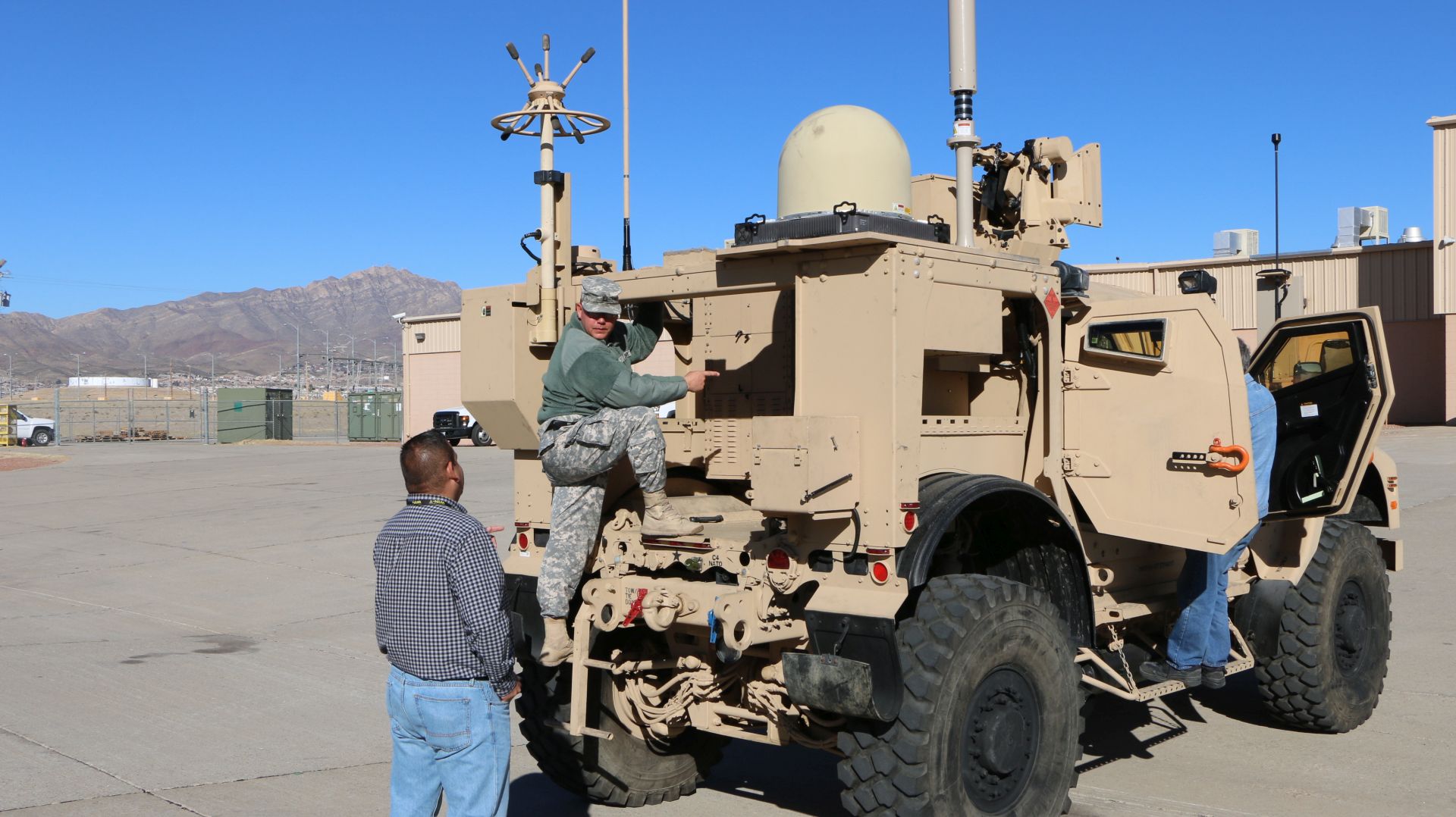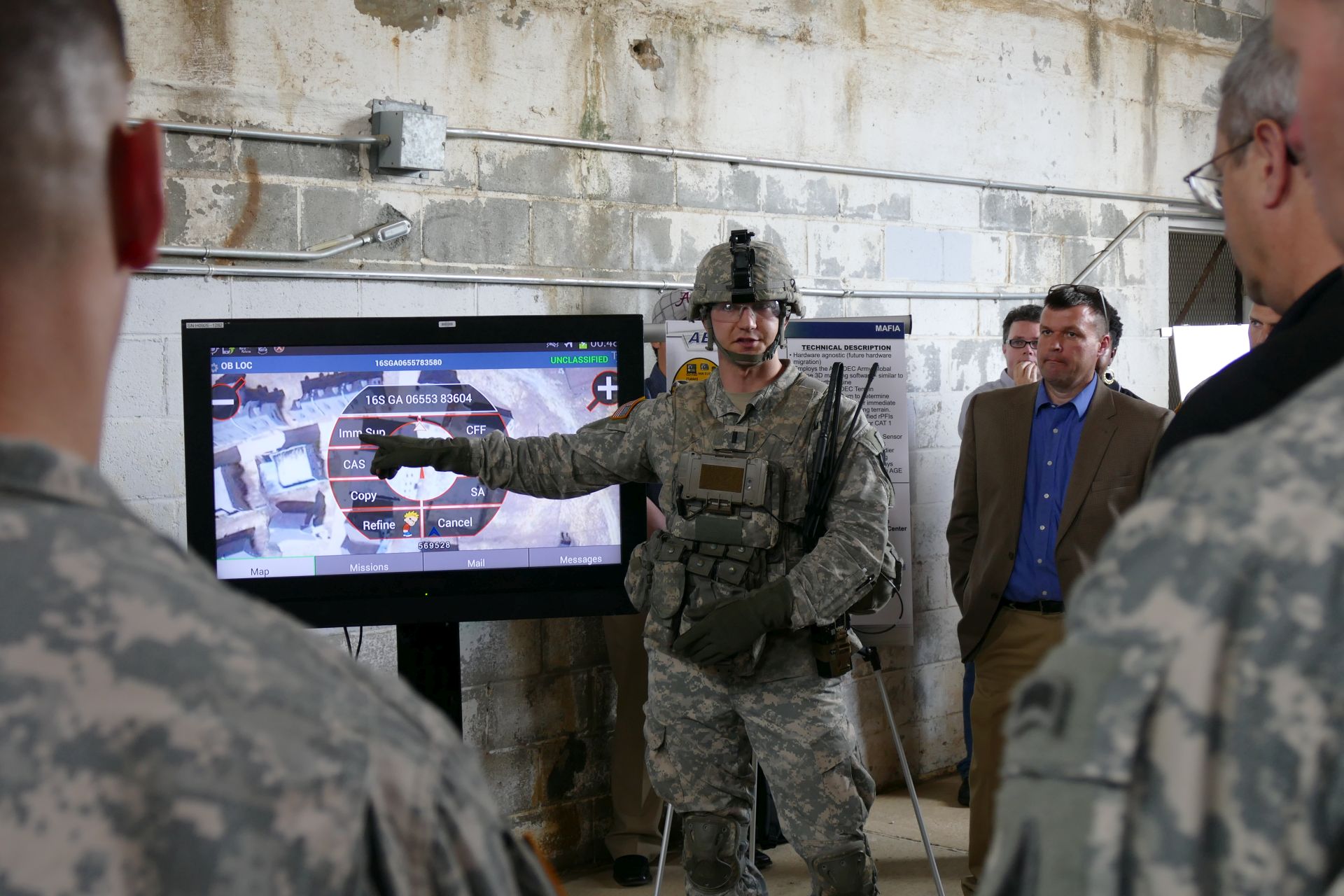In preparation of Network Integration Evaluation, or NIE, 15.2, Fort Bliss, Texas, transforms into the epicenter for one-of-a-kind vehicles equipped with the most technologically advanced Army network systems.
Engineers, technicians and Soldiers are beginning to immerse the Integration Motor Pool, or IMP, to integrate systems onto the vehicles that will be used during NIE. During spring, NIE 15.2 will be executed and Soldiers, from the 2nd Brigade Combat Team, 1st Armored Division, will begin testing the systems.
The development of NIE 15.2 has been in the works for more than a year, as System of Systems Engineering and Integration, Capability Package Directorate, or CPD, begins the fleet vehicle build – planning has become reality. The average Army tactical vehicle transforms into a unique prototype and people from throughout the country begin to travel to Fort Bliss to get a first-hand look.
“Our triad mission is to ensure that a synchronized, integrated, and validated NIE network is established,” said Col. Terrece Harris, director of capability package, which oversees the vehicle builds and collaborates with experts on the systems. “Our processes, which includes fleet build enables us to achieve our ultimate objective, which is ensuring that Soldiers receive approved NIE equipment through the capability set fielding efforts.”
Before building the entire fleet of more than 200 vehicles, the System Integration Division designed and built more than 20 vehicles known as golden vehicles. The golden vehicles are the original designs, which the rest of the fleet will be based upon.
“We design and build vehicles that don’t currently exist, getting the golden vehicles just right is crucial to the entire NIE timeline” said John Pollard, chief of System Integration Division within CPD. “Once we begin our fleet build, there is no room for error.”
While CPD has the overall responsibility of the entire fleet, people such as, Jim E. Fulbrook, Ph.D., lead training developer for vehicular integration for Command, Control, Communication, Computers, Intelligence, Surveillance, Reconnaissance/Electronic Warfare, or C4ISR/EW Interoperability Initiative, Intra Vehicle Network, also known as VICTORY IVN, focus on particular systems.
Fulbrook visited the IMP to sharpen his training presentation for the Soldiers, who will begin new equipment training in March. The development of this system in particular, has a history going back to NIE 12.2 and has come back with updated technological capabilities based on previous experience.
“We are adding a lot more features related to warnings, cautions, and safety, that give the Soldiers more information about the functionality of systems when there are problems,” Fulbrook said.
With NIE Soldier feedback, system engineers are able to make improvements and updates based on real evaluations rather than assumptions. The NIEs are executed on a semi-annual basis to keep the acquisition process continuously moving and to provide industry a streamline of feedback.
“There is new equipment being tested all the time due to all the technological advances,” said Sgt. 1st Class Carlos Shell, liaison officer, who creates a communication bridge for the incoming vehicles to the IMP. Shell said he has become accustom to tight schedules and continuous environment changes.
“With equipment constantly changing, we have to face the challenges head on,” Shell said. “We do this because we are the ones who need to make sure our Soldiers have survivability in combat.”











